A dog harness is a wearable device designed to provide comfort, control, and safety for dogs during walks, training, or specific activities like hiking or service work.
Unlike collars, harnesses distribute pressure across the chest and shoulders, reducing strain on the neck and offering better control for both pet and owner.
With various styles and purposes, harnesses have become essential tools for pet owners seeking to enhance their dog’s walking experience and overall well-being.
What is a Dog Harness?
A dog harness is a wearable device that wraps around a dog’s torso, providing a secure and comfortable way to walk or train your pet. Unlike collars, harnesses distribute pressure across the chest and shoulders, reducing strain on the neck. They are designed to prevent pulling behaviors and offer better control for owners. Harnesses come in various styles, from simple Y-harnesses to more specialized options for activities like hiking or service work. By minimizing neck strain, they promote a more enjoyable and stress-free walking experience for both dogs and their owners.
Why Use a Dog Harness?
A dog harness provides superior comfort, control, and safety compared to traditional collars. By distributing pressure across the chest and shoulders, it reduces neck strain, making it ideal for dogs that pull or have respiratory issues. Harnesses also offer better control for owners, especially for strong or energetic breeds. Additionally, they minimize the risk of escape and are designed for specific activities like hiking or training. Overall, a harness enhances the walking experience, ensuring both comfort and security for your pet.
History and Evolution of Dog Harnesses
Dog harnesses trace their origins to ancient times, initially used for working animals like sled dogs and draft animals. Early designs were simple straps made from leather or rope, focusing on functionality rather than comfort. Over centuries, the purpose shifted from labor to companionship, leading to modern designs prioritizing pet comfort and versatility. Today, harnesses are tailored for various activities, from service tasks to recreational outings, reflecting advancements in materials and understanding of canine anatomy. This evolution highlights a growing emphasis on pet welfare and specialized needs.
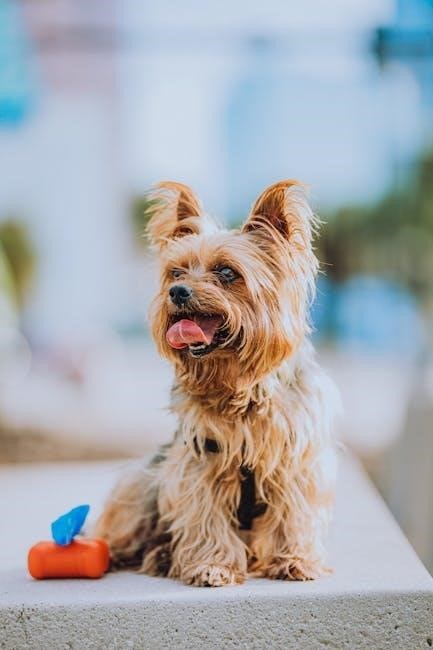
Types of Dog Harnesses
Dog harnesses come in various designs, catering to different needs and activities. Common types include Y-harnesses, vest harnesses, tactical harnesses, and H-harnesses, each offering unique benefits and functionality.
Y-Harness
A Y-harness is a popular choice due to its ergonomic design, featuring two straps that form a “Y” shape across the dog’s chest. This style distributes weight evenly, reducing pressure on sensitive areas and providing excellent control. It’s ideal for active breeds and dogs that tend to pull, as it minimizes strain on the neck. The Y-harness is also lightweight and breathable, making it suitable for long walks, hikes, and training sessions. Its versatility and comfort make it a favorite among pet owners seeking a practical yet effective solution for everyday use.
Vest Harness
A vest harness provides full coverage and is often padded for maximum comfort. It’s designed to wrap around the dog’s torso, offering a snug and secure fit. This style is ideal for dogs that require additional support or have sensitive skin. Vest harnesses are commonly used for service dogs, as they allow for easy attachment of ID tags and patches. The wide surface area distributes force evenly, reducing strain on the neck and chest. Its durability and comfort make it a great option for long walks, training, and active outdoor activities with your pet.
Saddle Harness
A saddle harness is designed with a girth strap that wraps around the dog’s chest and a strap that runs along the back, resembling a horse saddle. This style is ideal for dogs involved in pulling sports, such as sled pulling or carting, as it allows for even distribution of force. The saddle harness is typically made of durable materials to withstand heavy use. It’s a popular choice for strong, active breeds and is often used in dog sports or heavy-duty tasks. Proper fitting is crucial to prevent discomfort or injury.
H-Harness
An H-Harness, named for its distinctive “H” shape, features two vertical straps that run down the dog’s chest. Designed for dogs that pull heavily, this harness distributes force evenly across the chest and shoulders. It’s ideal for high-energy activities like sledding or carting. The H-Harness is durable and often used for working breeds or dogs in dog sports. Proper fitting is essential to ensure comfort and prevent injury, making it a popular choice for active dogs and owners seeking reliable control during rigorous tasks.
Tactical Harness
A tactical harness is designed for service, law enforcement, or military dogs, offering enhanced durability and functionality. Built with reinforced materials, it often features multiple attachment points, MOLLE systems for gear, and heavy-duty handles for control. This harness is ideal for high-stakes environments, providing both comfort and support during extended operations. Its sturdy construction ensures reliability, while adjustable straps allow for a secure fit. Tactical harnesses are a versatile choice for dogs requiring equipment for specialized tasks, ensuring peak performance and safety in demanding situations.
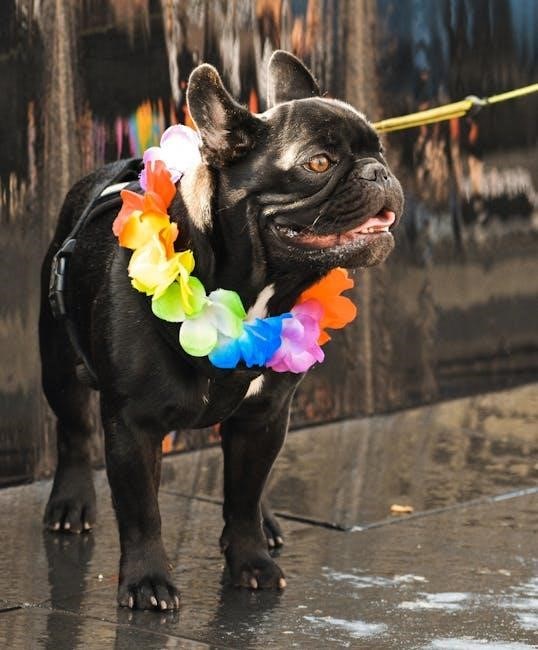
How to Choose the Right Harness
Selecting the right harness involves considering your dog’s size, breed, and activity level, as well as the harness’s purpose, comfort, adjustability, and durability for optimal fit and performance.
Consider Your Dog’s Size and Breed
Choosing the right harness begins with your dog’s size and breed. Measure your dog’s chest and girth accurately to ensure a proper fit. Different breeds have unique builds, so a harness designed for a small terrier may not suit a large mastiff. Proper sizing ensures comfort and prevents restrictive movement. For example, deep-chested breeds like Basset Hounds may require a longer harness, while slender breeds like Greyhounds need a more streamlined design. Always consider your dog’s specific needs to avoid discomfort or health issues.
Determine the Purpose of the Harness
Identifying the primary use of the harness is crucial. Are you walking your dog daily, hiking, or training? Different activities require specific features. For everyday walks, a simple, comfortable harness suffices. Hiking may demand added durability and padding, while service dogs need harnesses with ID tags and attachment points. Training or agility harnesses often have reinforced structures for strength. Tailoring your choice to the activity ensures functionality, safety, and comfort for your dog, making every outing more enjoyable and stress-free.
Evaluate Comfort and Adjustability
Comfort and adjustability are vital for your dog’s well-being. Look for soft, breathable materials and padding in high-friction areas to prevent irritation. A well-designed harness should allow for multiple adjustment points, ensuring a snug yet comfortable fit. Proper adjustability prevents restrictive movement and ensures even weight distribution. Consider your dog’s specific needs, such as sensitive skin or tendency to pull, when selecting a harness. A comfortable fit enhances walking enjoyment and reduces the risk of discomfort or injury, making adventures with your dog more enjoyable and stress-free.
Check Durability and Material Quality
Durability and material quality are crucial for a long-lasting harness. Opt for sturdy, weather-resistant materials like nylon or neoprene, which withstand regular use and outdoor conditions. Metal or reinforced plastic hardware ensures reliability, while double-stitched seams add strength. Avoid flimsy fabrics or weak buckles that may fail under stress. High-quality materials not only extend the harness’s lifespan but also provide comfort and safety for your dog. Additionally, eco-friendly options are becoming popular for environmentally conscious pet owners, offering both durability and sustainability.

Read Reviews and Seek Recommendations
Reading reviews and seeking recommendations is essential for finding the best dog harness. Look for feedback from other pet owners to evaluate comfort, durability, and functionality. Use specific search queries to find relevant reviews, such as “best dog harness for large breeds” or “harnesses for pulling dogs.” Pay attention to ratings and detailed descriptions to gauge real-world performance; Additionally, consult with veterinarians, trainers, or experienced dog owners for personalized advice. This step ensures you make an informed decision tailored to your dog’s specific needs and preferences, avoiding potential regrets or returns.
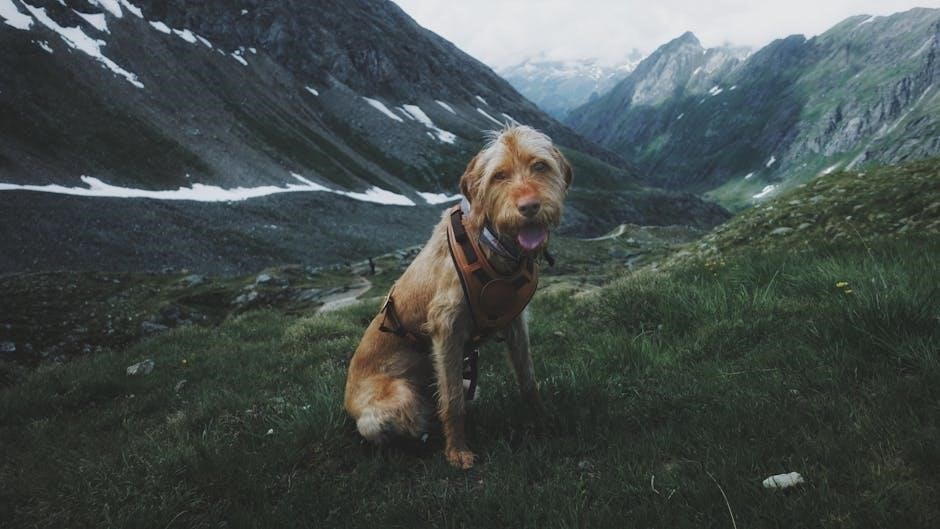
Measuring and Fitting a Harness
Properly measuring and fitting a dog harness ensures comfort and prevents skin irritation or restricted movement. Use a flexible tape measure around the chest and shoulders for an accurate fit. Adjust straps to avoid gapping or being too tight. A well-fitted harness promotes happy walks and prevents potential health issues. Always follow size charts and test the fit before regular use to guarantee the best experience for your dog.
How to Measure Your Dog for a Harness
To measure your dog for a harness, use a flexible tape measure around the broadest part of their chest, just behind the front legs; Ensure the tape is snug but not tight, allowing for a full range of motion. The measurement should account for your dog’s posture and any additional padding or layers. This ensures a comfortable, secure fit without restricting movement. Accurate measurements are crucial for selecting the right size and preventing discomfort during walks or activities.
How to Properly Fit a Dog Harness
Fitting a dog harness correctly ensures comfort and safety. Place the harness on your dog, adjusting the straps so it sits snugly around the chest and shoulders. The harness should allow for a full range of motion while preventing excessive shifting. Check the fit by inserting two fingers between the harness and your dog’s skin—tight enough to prevent slipping but not so tight that it causes discomfort. Avoid leaving it too loose, as this can lead to loss of control during walks. Proper fit prevents chafing and ensures your dog’s opposition reflex doesn’t cause pulling.
Common Fitting Issues and Solutions
Common fitting issues include harnesses that are too tight, causing discomfort, or too loose, leading to lack of control. If the harness rides up or chafes, it may indicate improper sizing. To address this, ensure the harness is snug but allows for two fingers of space between the material and your dog’s skin. Adjust straps as needed, particularly around the chest plate and girth. Regularly check the fit, especially as your dog grows or gains/loses weight, to maintain comfort and effectiveness. Proper adjustments prevent discomfort and ensure safe, enjoyable walks.
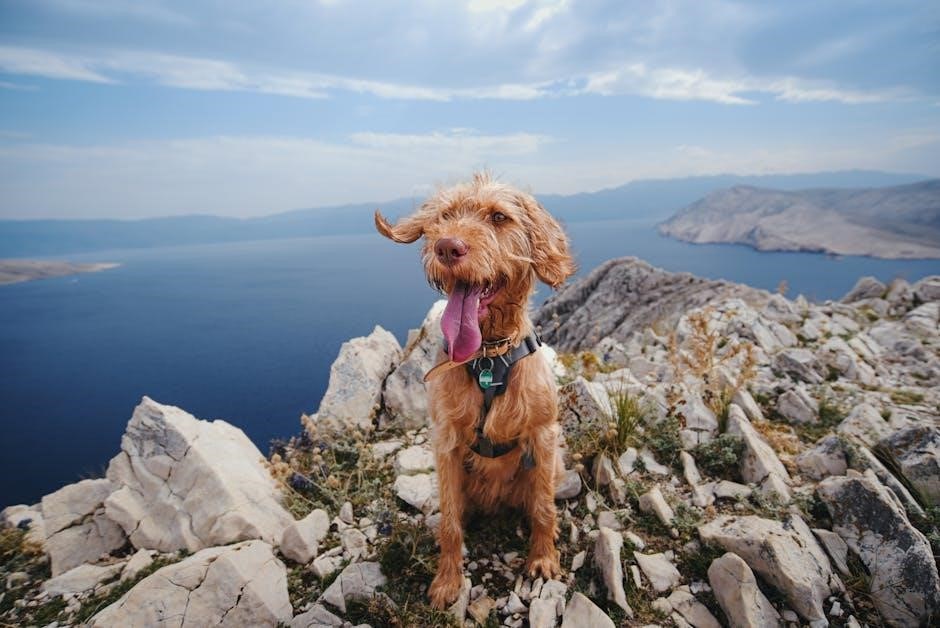
Activities Requiring Specific Harnesses

Activities like running, hiking, or service work demand specialized harnesses ensuring comfort, support, and functionality tailored to each task, enhancing safety and performance.
Service Dog Harnesses
Service dog harnesses are designed for working dogs, ensuring durability and functionality. They often feature sturdy handles, ID patches, and attachment points for medical equipment or ID tags, allowing dogs to perform their tasks efficiently. These harnesses are typically made from heavy-duty materials to withstand constant use and are lightweight to ensure long-term comfort for the dog. Proper fit and adjustability are crucial to prevent discomfort during extended work periods.
Running and Hiking Harnesses
Running and hiking harnesses are designed for active dogs, offering enhanced mobility and comfort during high-energy activities. These harnesses typically feature breathable, moisture-wicking materials to keep dogs cool and dry. They often include padded chest plates and adjustable straps for a secure, comfortable fit. Reflective strips or bright colors improve visibility, while durable construction withstands rugged terrain. Some models include built-in handles for quick control or emergencies, making them ideal for trail adventures. These harnesses prioritize flexibility, ensuring dogs can move freely without restriction.
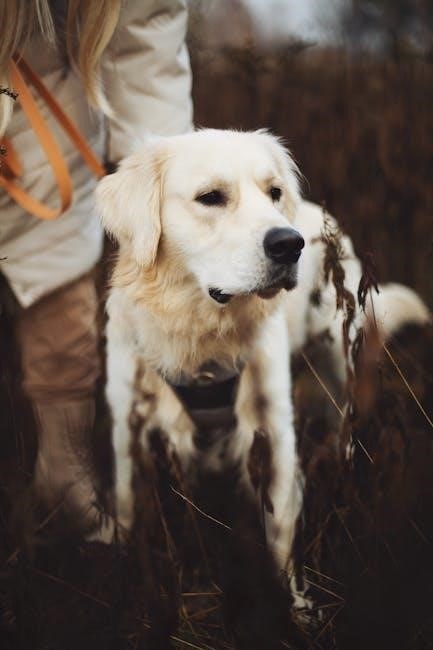
Training and Agility Harnesses
Training and agility harnesses are specifically designed for dogs engaged in obedience, agility, or high-energy activities. These harnesses prioritize flexibility and mobility, allowing dogs to move freely without restriction. Lightweight and durable materials ensure comfort during intense workouts. Many feature reinforced stitching and padded areas for added support. They are ideal for dogs that require precise control during training sessions or navigating obstacle courses. The design minimizes chafing and distributes pressure evenly, making them perfect for active dogs that need both guidance and freedom of movement.
Car and Travel Harnesses
Car and travel harnesses are designed to ensure your dog’s safety and comfort during road trips or adventures. These harnesses often feature sturdy construction and crash-testing certification to protect your dog in case of sudden stops or accidents. They typically include adjustable straps for a secure fit and may have quick-release buckles for easy on-and-off. Some models come with padding for added comfort and can be easily attached to seatbelts. These harnesses are ideal for long drives, providing peace of mind while keeping your dog safe and comfortable throughout the journey.
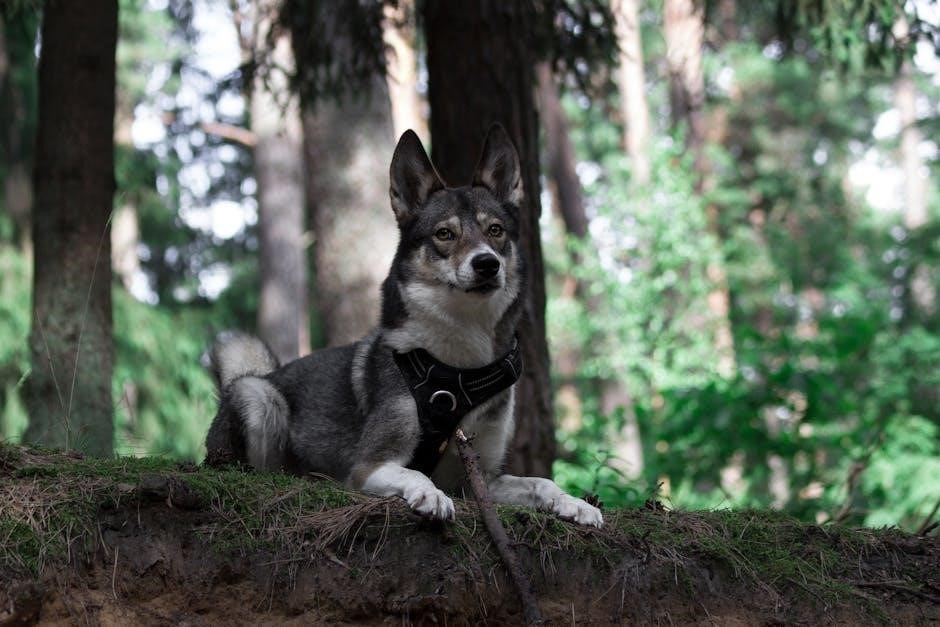
Training Your Dog to Wear a Harness
Introduce the harness gradually, ensuring your dog feels comfortable and secure. Use positive reinforcement to make the experience enjoyable and effective for your pet.
Introducing the Harness Gradually
Start by placing the harness near your dog’s favorite resting or feeding spots to create a positive association.
Allow your dog to explore the harness at their own pace, ensuring they feel comfortable with its presence.
Begin by letting your dog sniff and interact with the harness without pressure or expectation.
Gradually introduce the harness by putting it on for short periods, rewarding calm behavior with treats or praise.
This method helps your dog become familiar with the harness, reducing anxiety and making the process enjoyable.
Positive Reinforcement Techniques
Use treats, praise, and affection to create a positive association with the harness.
Reward your dog for calm behavior when the harness is introduced or worn.
Keep initial sessions short to maintain your dog’s focus and prevent overwhelm.
Avoid forcing the harness onto a resistant dog, as this can create negative associations.
By linking the harness to enjoyable experiences, your dog will learn to accept and even enjoy wearing it.
Common Challenges and Solutions
Common challenges include dogs pulling excessively, harnesses causing skin irritation, or dogs resisting wearing them.
To address pulling, use positive reinforcement and stop when pulling occurs, rewarding calm behavior.
For discomfort, ensure proper fit and choose breathable, padded materials.
If a dog resists the harness, introduce it gradually, pairing it with treats and positive experiences.
Patience and consistency are key to overcoming these challenges and helping your dog adapt comfortably.
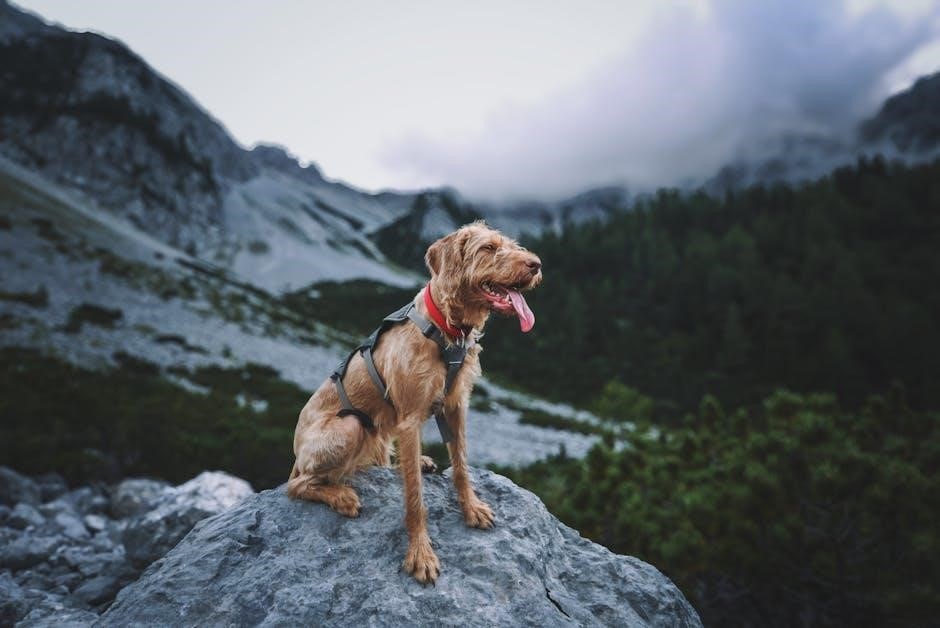
Future Trends and Innovations
Smart harnesses with GPS tracking, eco-friendly materials, and customizable designs are emerging trends;
Wearable technology integration and real-time monitoring systems are also gaining popularity, enhancing pet safety and comfort.
Smart Harnesses with GPS Tracking
Smart harnesses with GPS tracking are revolutionizing pet safety, offering real-time location monitoring and escape prevention.
These devices often include health monitoring, customizable alerts, and integration with smartphones.
They provide peace of mind for owners, especially for dogs prone to wandering or working in challenging terrains.
Advanced models may also track activity levels and vital signs, enhancing overall pet care.
This technology is particularly valuable for service dogs, search and rescue operations, and active outdoor adventures.
Eco-Friendly and Sustainable Materials
Dog harnesses are increasingly being crafted from eco-friendly materials like recycled plastics, organic cotton, and hemp.
These sustainable options reduce environmental impact while maintaining durability and comfort.
Brands are also incorporating biodegradable components and minimizing waste in production processes.
Eco-conscious owners can now choose harnesses that align with their values, promoting a greener future for pet products.
This trend reflects a growing demand for sustainable living and responsible consumer choices in the pet industry.
Customizable and 3D-Printed Harnesses
Customizable and 3D-printed dog harnesses offer tailored fits and unique designs.
Owners can personalize colors, patterns, and even add their dog’s name for a bespoke look.
3D printing allows for intricate details and precise measurements, ensuring optimal comfort and support.
This innovation enables the creation of harnesses for dogs with specific needs, such as medical conditions or unique body types.
The ability to customize every aspect makes these harnesses both functional and fashionable, catering to individual preferences and requirements.
Dog harnesses offer comfort, safety, and versatility for dogs of all sizes and needs. Choosing the right one ensures enjoyable walks and tailored support for your furry companion.
Final Thoughts on Choosing the Best Dog Harness
Selecting the right dog harness is crucial for your pet’s comfort and your peace of mind. Consider your dog’s size, breed, and activity level to ensure proper fit and function. Durability and material quality are key for long-term use, and reading reviews can provide insights into real-world performance. Introduce the harness gradually, using positive reinforcement to help your dog adjust. Whether for daily walks, hiking, or specialized tasks, the right harness enhances both your dog’s safety and your shared experiences, making every outing enjoyable and stress-free.
